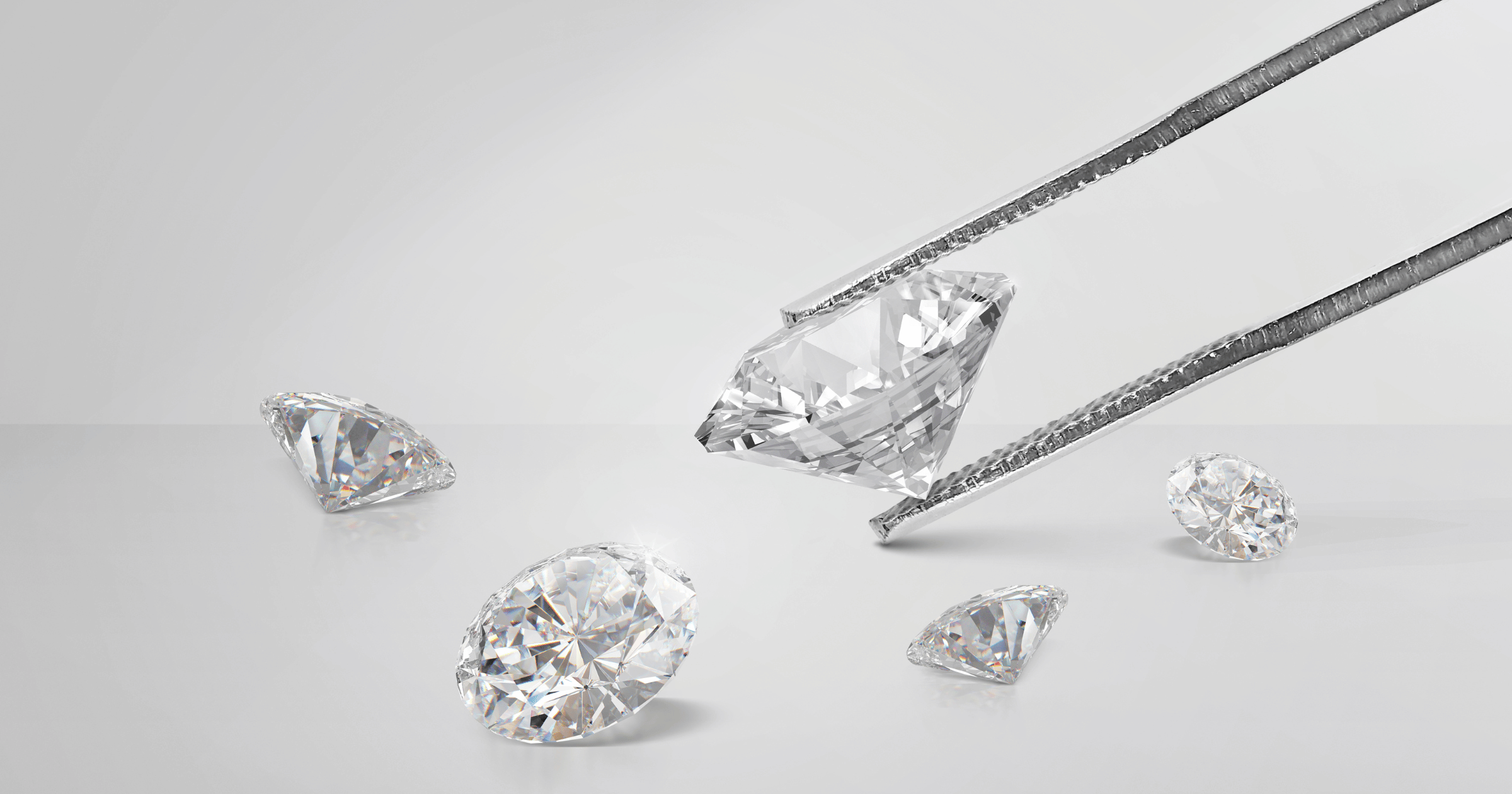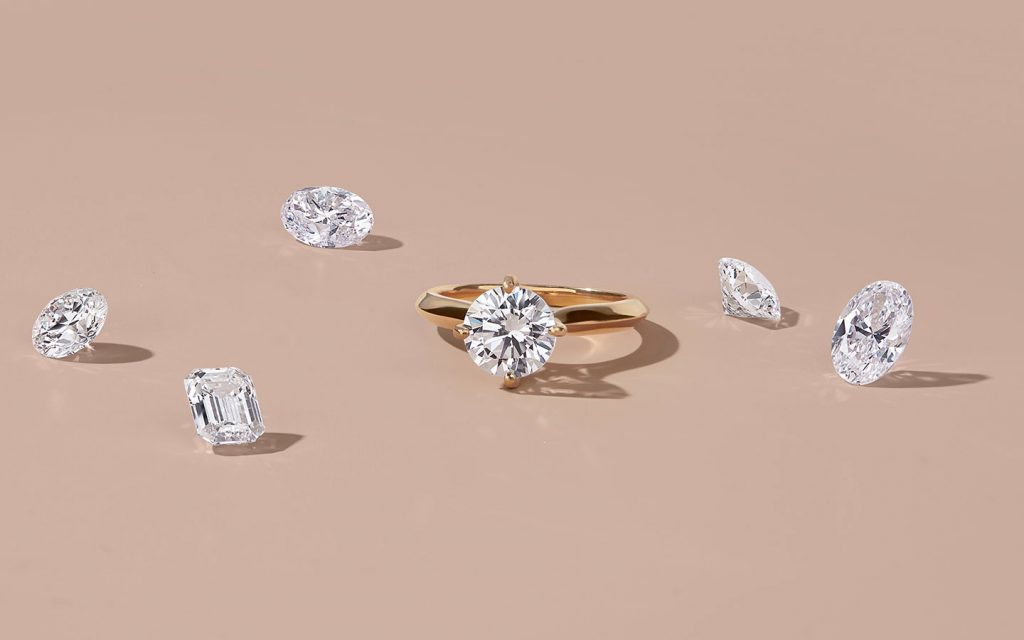Diamonds are one of the most sought-after and valuable gemstones in the world. However, purchasing the perfect diamond requires understanding the key factors that influence its value and appearance. These factors are known as the “4 Cs”: Cut, Color, Clarity, and Carat weight. In this article, we will focus on two of the most important characteristics—diamond colour and clarity chart—explaining their grading systems, how they impact the diamond’s overall quality, and how you can use the diamond color and clarity chart to make an informed decision.
What is Diamond Color?
Diamond color refers to the presence or absence of color in a diamond, with the most valuable diamonds being completely colorless. Color is graded on a scale from D to Z, with D representing colorless diamonds and Z representing diamonds with noticeable color. The absence of color allows more light to pass through the diamond, creating a brilliant sparkle.
Diamond Color Chart (D-Z Scale)
The diamond color chart uses letters to represent a range of colors, from colorless to light yellow or brown. The most common grading scale used by professionals is the GIA (Gemological Institute of America) color scale. Here’s a breakdown of the scale:
Color Grading Scale:
- D – Colorless: The highest grade. These diamonds have no noticeable color and are the rarest and most expensive.
- E and F – Colorless: Almost colorless diamonds that are hard to distinguish from D diamonds. Only an expert can tell the difference.
- G and H – Near Colorless: Slightly tinted diamonds that are still a good choice for those who want a high-quality diamond but are looking to save a bit.
- I and J – Fair: Diamonds with noticeable color. These are still a good value but may not look as sparkling as higher-grade diamonds.
Choosing the Right Diamond Color
While D and E diamonds are the most sought after, they come at a higher price. A G or H diamond, on the other hand, can be an excellent choice for those looking to get more value without compromising too much on appearance.
What is Diamond Clarity?
Diamond clarity refers to the presence of internal or external imperfections, known as inclusions and blemishes. The clearer the diamond, the higher its value. While some inclusions are microscopic and invisible to the naked eye, others may affect the diamond’s overall appearance and brilliance.
Diamond Clarity Chart (Flawless to Included)
Diamond clarity is graded using a system that ranges from Flawless (FL) to Included (I1, I2, I3), based on the type, size, and location of the inclusions. Here’s how diamonds are graded on the clarity scale:
Clarity Grading Scale:
- FL (Flawless): No inclusions or blemishes visible under 10x magnification. These diamonds are extremely rare and highly valuable.
- IF (Internally Flawless): No inclusions visible under 10x magnification, but there may be slight surface blemishes. These diamonds are still considered near-perfect.
- VVS1, VVS2 (Very, Very Slightly Included): Inclusions are very difficult to detect under 10x magnification. These diamonds have high clarity and are almost flawless.
- VS1, VS2 (Very Slightly Included): Minor inclusions that are difficult to detect under 10x magnification but are visible to trained gemologists. These diamonds offer excellent clarity at a more affordable price.
- SI1, SI2 (Slightly Included): Inclusions are visible under 10x magnification, but they may not be noticeable to the naked eye. They are a more budget-friendly option for buyers who still want a high-quality diamond.
- I1, I2, I3 (Included): These diamonds have noticeable inclusions that are visible without magnification. They can affect the diamond’s clarity and brilliance and are usually lower in price.
Choosing the Right Diamond Clarity
If you are looking for a diamond that’s stunning but also within a reasonable price range, a diamond with a clarity of VS1 or VS2 is often the best value. While FL and IF diamonds are rare and beautiful, their price tag might be significantly higher, and the difference in appearance is often difficult to notice with the naked eye.
How Do Diamond Color and Clarity Affect Value?
Both color and clarity play a crucial role in determining the overall value of a diamond. Diamonds with better color and clarity grades are generally more expensive, as they are rarer and considered more desirable. However, it’s important to note that while these two characteristics are vital, cut and carat weight also impact a diamond’s value.
Color and Clarity Synergy
When choosing a diamond, it’s essential to consider how color and clarity work together to enhance its beauty. For example:
- A lab diamonds (D or E grade) will have a stunning brilliance, even if its clarity is not perfect.
- On the other hand, a diamond with high clarity but noticeable color (such as an H or I grade) may not sparkle as brightly and could appear more muted in comparison.
By balancing color and clarity based on your budget and preferences, you can find a diamond that maximizes both its beauty and value.
Tips for Buying a Diamond Based on Color and Clarity
1. Understand Your Budget
- If you’re working within a specific budget, you may need to compromise between color and clarity. A lower-color diamond with better clarity could be a great balance.
2. Consider the Size of the Diamond
- Larger diamonds tend to show color and clarity issues more than smaller ones. If you’re buying a smaller diamond (like a 0.5-carat), color and clarity may be less noticeable to the naked eye.
3. Inspect Under Proper Lighting
- View the diamond under different lighting conditions to see how the color and clarity appear in various settings. Diamonds can look different in natural sunlight versus artificial light.
4. Don’t Forget About the Cut
- The cut of the diamond will greatly influence how light reflects off it, enhancing its overall brilliance. A well-cut diamond can mask minor flaws in color or clarity.
Conclusion
Choosing the right diamond involves understanding both diamond color and diamond clarity. While diamonds with higher grades in these categories are more expensive, there are plenty of options that offer great value. By using the diamond color and clarity chart, you can make an informed decision and select a diamond that fits your preferences, budget, and desired level of brilliance.
Remember, diamonds are personal, and what’s most important is finding one that captures the essence of your special moment, whether it’s for an engagement ring, anniversary, or any occasion.



